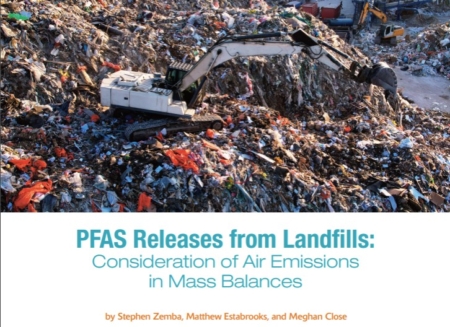The state of New Jersey has established some of the nation’s most stringent drinking water maximum contaminant levels (MCLs) and ground water quality standards (GWQS) for PFOA, PFOS and PFNA, and these standards are prompting new requirements. These compounds have been added to New Jersey’s List of Hazardous Substances as summarized in NJDEP SRP – Emerging Contaminants and Q&A on PFOA and PFOS.
Here we have provided a short summary of recent changes to the requirements relating to these emerging contaminants relative to drinking water, discharge to surface water, and groundwater remediation along with references for you to learn more about each regulatory change as it relates to work in the state of New Jersey. Below we have also included information on the recent EPA changes relating to expansion of the PFAS list of compounds (UCMR5).
- Public Water Supply Requirements – Due to the adoption of the NJ MCL for PFOA and PFOS, all public community water systems and all public non-transient noncommunity water systems in New Jersey were required to begin quarterly monitoring at all points-of-entry to the distribution system for PFAS and PFOS in 2021. Due to the adoption of UCMR5 on December 17, 2021 by the EPA, which has a larger list of PFAS compounds, New Jersey may expand the requirements to include a larger list of PFAS compounds. More information for UCMR5 can be found via the article EPA Announces Nationwide Monitoring Effort to Better Understand Extent of PFAS in Drinking Water.
- Private Wells Requirements – Starting on December 1, 2021 private well owners in New Jersey are required to test for PFOA, PFOS, and PFNA under the Private Well Testing Act (PWTA) when selling or leasing a home or multi-unit dwelling with private well. More information can be found at the New Jersey Department of Environmental Protection’s (NJDEP) website.
- NJDEP Requirements – New Jersey is potentially expanding the New Jersey Pollutant Discharge Elimination System (NJPDES) permit application testing requirements/pollutant listings and requirements for discharges for PFOA and PFOS. The NJDEP has required all industrial users and significant non indirect users to fill out a survey, the results were posted on December 7, 2021 and more information can be found via the NJDEP’s Division of Water Quality.
- Site Remediation Program Requirements – The NJDEP has an established procedure for sampling at Site Remediation program as summarized in Contaminants of Emerging Concern Frequently Asked Questions.
Due to the fast-moving nature of the science behind emerging contaminants such as PFAS, it is important to stay up-to-date on local, state, and federal regulations. Our team of scientists and engineers at Sanborn Head closely monitors changes to regulations so we can provide up-to-date guidance and support for our clients on their projects.
The Sanborn Head team is ready to meet with you to review these changes as it relates to any ongoing or planned work. Contact Colleen Costello at ccostello@sanbornhead.com or Steve Zemba at szemba@sanbornhead.com to find out more information.
Posted In: Articles
Tagged In: Industrial, PFAS






